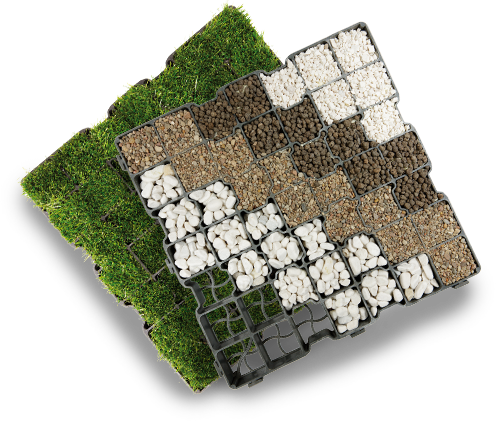GREEN SYSTEM
green roofs – the future of ecological construction.
The GREEN SYSTEM grid has been designed with the intention of constructing green roofs of varying intensities, encompassing both lush and more economical options.
| Technical specification | |
|---|---|
| Dimensions | 810x610x100[mm] ±3% |
| Cell thickness | 10,0 [mm] ±15% |
| The quantity per sqm | 2 pcs. |
| Weight | 7,2 kg/pcs. ±4% |
| Colour | Shades of black |
| Material | PP PE 100% recycling |
| Durability | 300 t/m2 |
| Maximum axle load | 20 tons |
| Biologically active surface | 85% |
| Durability | More than 18 years |
| Environmental impact: | Environmentally sound and groundwater neutral. This product is acid, leaches (street salt, acid rains, ammonia etc.) and alcohol resistant |
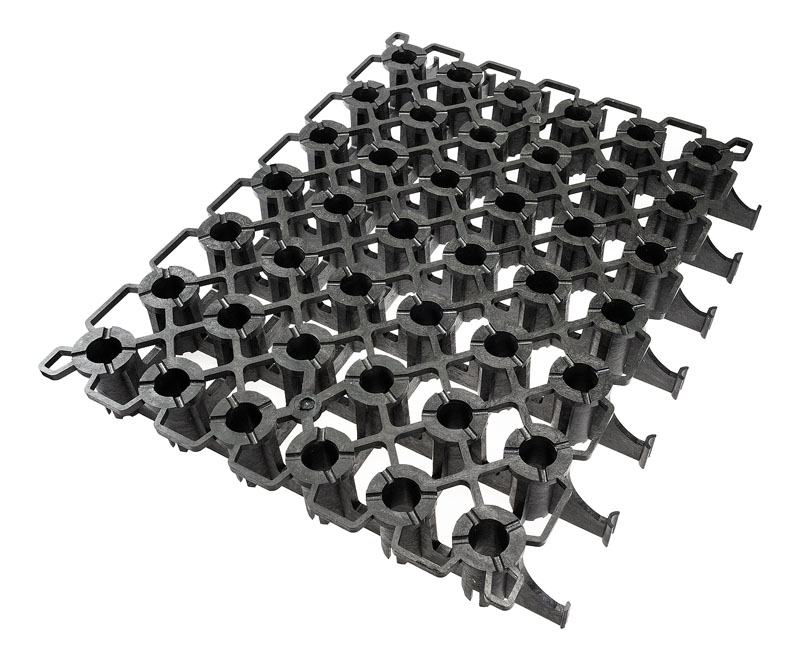
The GREEN SYSTEM is placed between the waterproofing layer and the plant substrate. Its installation creates an empty space necessary for storing water in the internal drainage system of a green roof. In the case of heavy rainfall, the performance of the GREEN SYSTEM can reach up to 80 l/m2 when using a single layer with a height of 10 cm. The thicker the substrate layer and vegetation, the greater the water retention. The runoff coefficient for the grid with plant fill on a flat surface ranges from 0.23 to 0.31.


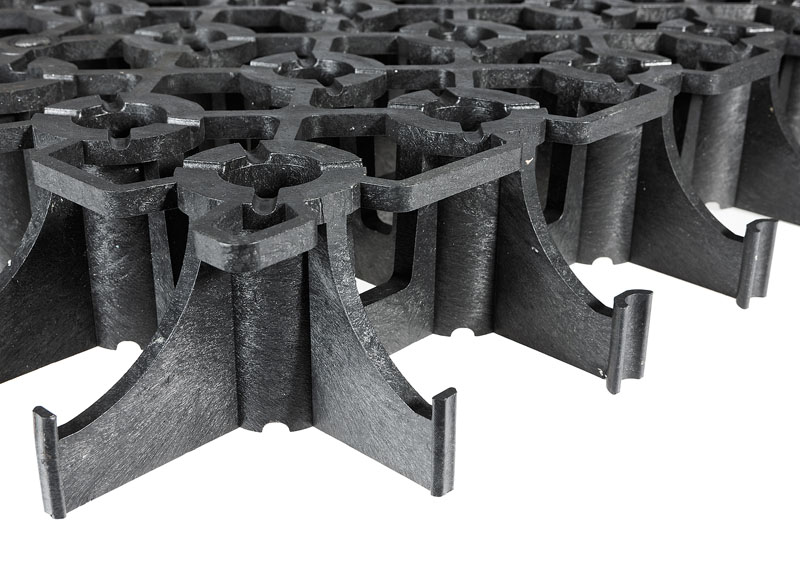
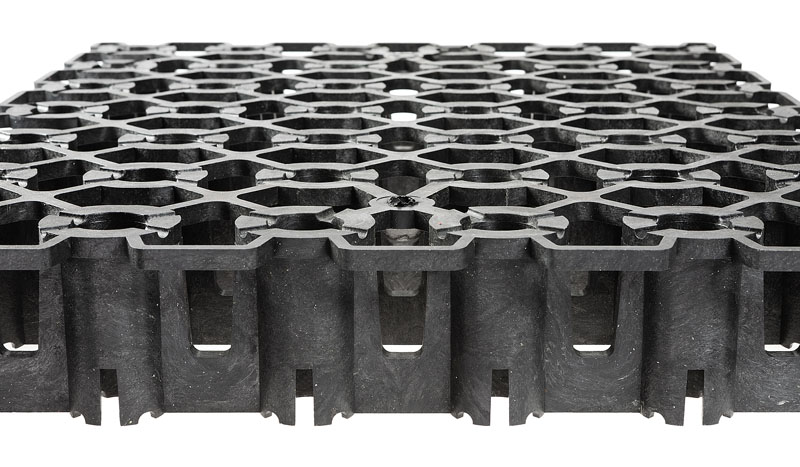
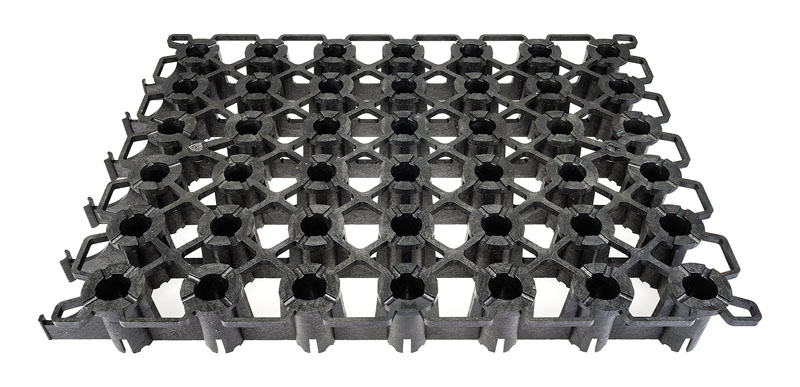
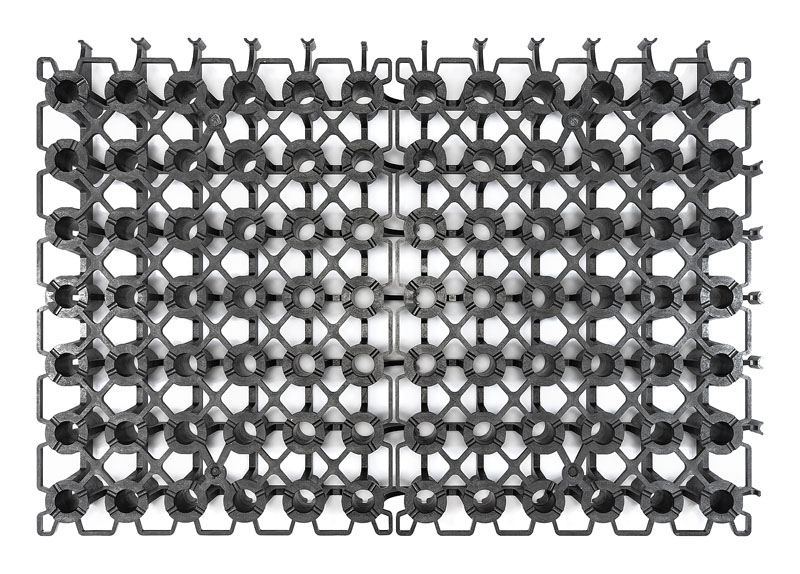
The GREEN SYSTEM can also serve as a retention tank in blue-green roofs. Water accumulated after heavy rainfall is retained in the tank and then gradually discharged through gutters. Additionally, the GREEN SYSTEM can be used for watering plants, enabling the reuse of water from the roof for garden irrigation.
Grids properties:
- Low weight: Eliminates additional load on the roof structure.
- Modular construction: Installation of the geogrid is fast, and expansion is easy, even in the case of complex roof geometry.
- Recycled Materials: Manufactured entirely from recycled PP PE plastic, the GREEN SYSTEM geogrid aligns with sustainable development principles in the selection of construction materials.
- Environmentally friendly: The construction material is environmentally neutral and groundwater-resistant, resistant to acids, salts, ammonia, and alcohols.
- Biologically active surface: Up to 85% of the geogrid’s surface constitutes a biologically active area, easily meeting the building regulations for dense development.
- High load resistance: The GREEN SYSTEM geogrid demonstrates impressive load resistance – 300 tons/m2 (unfilled) and 1000 tons/m2 (filled).
Advantages of building green roofs

Water Retention
Perforated grids placed on green roofs play a crucial role in rainwater retention. Thanks to their special structure, they effectively collect rainfall and then gradually release the accumulated water. This process promotes the natural water cycle, which is particularly important in urban areas where a significant portion of the surface is paved. Significantly reducing the risk of floods is a significant aspect of the benefits associated with green roofs, especially in the context of urbanization.

Thermal isolation
Green roofs have the ability to significantly improve the thermal insulation of buildings. Vegetation, which is an integral part of green roofs, acts as an additional insulating layer. As a result, it limits heat loss in winter and stops the building from overheating in summer. This additional insulation layer contributes to energy savings and improved energy efficiency, which in turn benefits both the environment and the building’s users.

Improving Air Quality
By incorporating perforated grids on green roofs, a natural air filtration effect can be achieved. The vegetation on these roofs absorbs carbon dioxide and removes pollutants from the surrounding air. As a result, the greenery acts as an air purifier, contributing significantly to the improvement of air quality around buildings. This effect is particularly crucial in the context of combating air pollution in urban areas, where this issue is often pronounced


